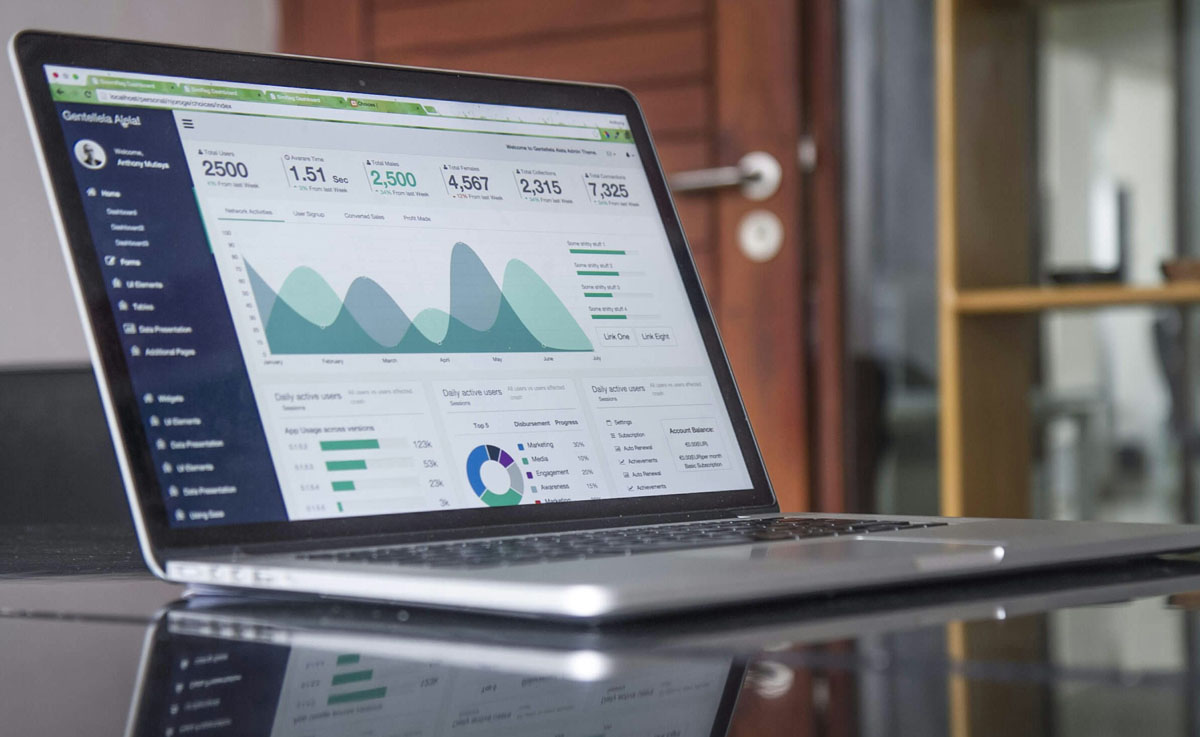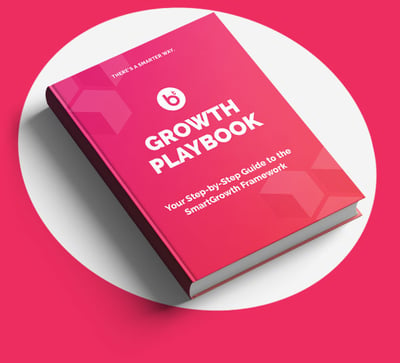Is your competition dominating the Google rankings, leaving your B2B website in the dust? Are you frustrated with generating website visitors in the hundreds while your competitors have tens of thousands? As a B2B owner, you understand that your website should be a key customer acquisition tool - a way to generate leads 24/7. But low traffic and poor rankings aren’t the foundation for success. It's time to change the game.
This article unveils 7 powerful B2B SEO strategies to elevate your rankings and fully leverage your site's potential. From sharpening your on-page content to acquiring stellar backlinks, we'll show you how to build steady, predictable traffic to help your ideal customers find you. No more settling for lackluster traffic and meager organic lead generation. Ready to begin?
4 Steps to Improve Your On-Page B2B SEO
On-page SEO is the practice of optimizing individual web pages to rank higher and earn more relevant traffic in search engines. This discipline focuses on both the content and the HTML source code of a page that can be optimized, unlike off-page SEO which refers to links and other external signals. For B2B companies, on-page SEO is not just about sprinkling keywords throughout your site's content; it is about creating value-driven, informative content that answers your target audience's questions and solves their problems. It involves ensuring your website design is structurally sound with a clear navigation hierarchy, optimizing your meta tags and images, and making your site mobile-friendly. In essence, on-page SEO is about making your website more accessible and valuable to both users and search engines, which, in turn, propels your rankings upwards.
Step 1: Keyword Research
Mastering keyword research is crucial for any B2B owner aspiring to dominate search rankings. Start by identifying the terms and phrases your ideal customers are using when searching for solutions you provide. Utilize tools like Google’s Keyword Planner or SEMrush to uncover keywords that are relevant to your business but have lower competition, making them easier targets for ranking. Focus on long-tail keywords, as they tend to have a clearer intent and are less competitive. These are phrases of three or more words that precisely match the queries potential clients might use when they are closer to a purchase decision.
Implementing your findings from keyword research involves a strategic approach. Integrate the selected keywords into your website’s blog posts, but do so in a way that feels natural and provides real value to the reader. Avoid the temptation to “keyword stuff,” as search engines can penalize your site for this practice. Instead, sprinkle your keywords throughout the content in a way that enhances the reader’s experience. Use them in your headings, subheadings, and within the body text, ensuring they align naturally with the topic you're discussing. Weave keyword research into your B2B blog strategy so it’s happening consistently over time. Remember, the ultimate goal of incorporating keywords is not just to rank higher but to drive relevant traffic to your site by addressing the specific needs and questions of your B2B audience.
Step 2: Build Internal links
Internal links are hyperlinks that point from one page to another within the same domain. They’re a vital component of SEO for several reasons, particularly for bolstering your site’s structure and enhancing user navigation. For starters, internal links guide visitors to other relevant content on your site, effectively keeping them engaged longer. This not only improves the user experience but signals to search engines that your site provides valuable information, which can positively impact your rankings.
Moreover, internal links distribute page authority throughout your website. When one page has a high number of external links pointing to it, its authority increases. By using internal links, you can spread some of this authority to other pages, helping them to rank better. In essence, internal links are crucial for B2B SEO because they create a tighter network within your site, making it easier for search engines to crawl and index your pages. Utilizing internal links wisely can elevate your site's visibility in search results, driving more relevant traffic, and ultimately, enhancing your B2B’s online presence.
Step 3: Tags, Titles and Descriptions
Optimizing your alt-tags, meta descriptions, and page titles with carefully selected keywords is essential for any B2B website aiming to dominate the digital landscape. Alt-tags, which provide text alternatives for images, are critical for search engines that rely on text to understand content. Embedding keyword-rich alt-tags ensures your images contribute towards your site's SEO, helping visually impaired users and search engines grasp the full context of your web pages.
Meta descriptions, the brief page summaries seen under your website's title in search results, play a pivotal role in click-through rates. A well-crafted, keyword-rich meta description acts like an elevator pitch, enticing potential visitors to choose your website over your competitors. While not directly influencing rankings, they are integral to driving relevant, interested traffic to your site, a metric Google values when determining your site's authority and relevance.
Page titles, the first impression your site makes in search results, are SEO powerhouses. A compelling, keyword-optimized page title can dramatically enhance your visibility, drawing in targeted traffic and signaling to search engines the relevance and context of your website copy. It's more than a title; it's a decisive factor in whether potential clients click on your website or scroll past it.
Incorporating strategic, keyword-rich alt-tags, meta descriptions, and page titles is not just an SEO tactic—it's a definitive signal of your site’s relevance and value to both search engines and your ideal B2B audience. This nuanced approach ensures every element of your site works tirelessly towards cementing your position at the top of search engine results, transforming your website into a beacon for quality, relevance, and trust in your industry.
Step 4: Technical Aspects
Page load speed is not just a technical metric; it's a crucial factor affecting user experience, engagement, and conversion rates. In a digital age where speed is of the essence, users expect websites to load almost instantaneously. A delay of even a few seconds can lead to increased bounce rates, as potential customers lose patience and seek faster alternatives—usually your competitors.
Furthermore, Google has explicitly stated that page speed is a ranking factor for both desktop and mobile searches. This means that a slow-loading site not only risks losing current visitors but also diminishes its chances of being discovered by new potential clients. Prioritizing page loading speed is, therefore, a powerful strategy to ensure your site remains competitive, visible, and highly engaging in the fast-paced digital market.
Site and page indexing are equally important, as they directly influence how quickly your content becomes discoverable to users through search engines. If your site and its pages are not indexed promptly, it equates to invisibility in the digital realm, no matter the quality of your content marketing or the strength of your SEO strategies elsewhere. Ensuring a swift indexing process means your valuable content starts to work for you sooner, driving traffic, generating leads, and increasing the potential for conversions. It's also an indicator to search engines like Google that your website is updated regularly, maintaining its relevance. In essence, focusing on prompt indexing is critical to ensure that your target audience finds you exactly when they're searching for the solutions you offer, maximizing the return on your digital marketing efforts.
3 Steps to Boost Off-Page B2B SEO
Off-page SEO, in its simplest form, is about everything that doesn't happen directly on your website to improve its position in search rankings. Imagine your site as a candidate running for office; Off-page SEO represents the endorsements, word-of-mouth recommendations, and visibility efforts happening outside of your campaign platform. It's the process of building a strong, reputable presence across the digital landscape, ensuring that other respected websites and platforms are talking about you positively, linking back to your site, and amplifying your content.
Step 1: Link Building
Earning links, often referred to as "white hat" link building, demands a strategic, content-focused approach. By generating high-quality, informative content that genuinely serves the needs and interests of your target audience, you create a natural magnet for backlinks. Encouraging industry influencers and reputable websites to share or reference your content is not only about creating visibility; it's about endorsing your expertise and authority in your field. Guest blogging on respected industry websites, participating in relevant forums, and maintaining an active, engaging presence on social media platforms are all effective ways to earn legitimate, valuable links. This approach not only enhances your SEO but also strengthens your brand's online reputation and credibility.
Conversely, "black hat" techniques, such as participating in link farms, buying links, or using deceptive cloaking practices, are highly risky. These methods attempt to manipulate search engine rankings through unethical means, violating search engines’ terms of service. While they might offer short-term gains in visibility, the long-term consequences can be severe. Search engines, particularly Google, are becoming increasingly sophisticated in identifying and penalizing websites that engage in these practices. The repercussions can range from a significant drop in rankings to a complete removal from search index listings, effectively erasing all your SEO efforts and damaging your business's digital presence and reputation.
For B2Bs, link building enhances SEO by signaling to search engines that others value your content enough to link to it, increasing the quality and relevance of your site. Each backlink acts as a 'vote of confidence', increasing your site’s authority and improving its likelihood of ranking higher in search results. Effective link-building is not just about improving search rankings; it's about building a network of digital endorsements that amplify your business's credibility, authority, and ultimately, its success in the digital landscape.
Step 2: Social Media and Email Marketing
In today's digital landscape, social media platforms extend far beyond mere networking sites; they are powerful channels that can significantly amplify your brand's visibility and authority online. By creating a robust social media strategy, you foster brand awareness and drive traffic to your website through shared content and discussions. This increased traffic signals to search engines the relevance and value of your site, indirectly boosting your SEO. Furthermore, social media allows for the cultivation of relationships with influencers and other businesses, creating opportunities for natural link-building which is essential for enhancing your site's credibility and authority in the eyes of search engines.
Email marketing, on the other hand, serves as a direct line to your target audience, enabling you to share valuable content, updates, and offers straight to their inboxes. Through newsletters and email nurture campaigns, you can encourage recipients to visit your website, thereby increasing site traffic and engagement—a key factor in SEO rankings. Including links within emails not only drives direct traffic but also enhances the likelihood of your content being shared across other platforms, further broadening its reach. What makes email marketing particularly compelling for B2B companies is its ability to segment and personalize content for different segments of your audience, ensuring that the information is relevant, engaging, and more likely to be acted upon.
Step 3: Public Relations
Earned media through public relations activities is a powerhouse in off-page SEO strategy, fundamentally serving as a testament to a brand’s authority and value in its industry. By garnering attention and mentions from reputable media outlets and platforms, businesses can secure high-quality backlinks that bolster SEO. These authoritative links are endorsements of your content's credibility, persuading search engines of your site’s relevance and reliability. The essence of effective PR lies in the ability to leverage B2B storytelling and craft pitches that resonate with journalists and influencers, leading to natural mentions and shares across influential sites. Such strategic media coverage not only elevates brand awareness but also significantly enhances the brand's digital footprint through increased organic search visibility.
Furthermore, leveraging PR to develop relationships with journalists, bloggers, and influencers in your industry opens doors to opportunities for consistent, credible external links. Each earned media mention through PR can lead to substantial improvements in SEO by directly influencing how search engines evaluate and rank your website. It’s these credible, high-quality links that Google and other search engines favor most, viewing them as a reflection of your site's authority. This, in turn, can lead to higher search rankings and increased web traffic. The dual impact of boosting your brand's reputation while also enhancing its digital presence makes PR an indispensable component of a comprehensive off-page SEO strategy.
Final Thoughts on SEO for B2B
The landscape of digital marketing is continually evolving, and B2B brands must adapt to stay ahead. Throughout this article, we've dissected the intricacies of on and off-page SEO, emphasizing its undeniable role in elevating a brand's online presence and authority. By starting with keyword research, attending to proper page structure, meticulously implementing link-building strategies, and harnessing the power of social media and email marketing, businesses can significantly enhance their digital footprint.
However, it's crucial to remember that SEO, while powerful, is just one piece of a much larger puzzle. Effective growth marketing demands a holistic approach, integrating on-page and off-page SEO with content marketing (link to pillar), social media strategy, and much more. It's about creating a comprehensive ecosystem that not only attracts but also engages and converts your target audience.
At Brand Theory, we develop growth marketing strategies that align with your business goals and audience needs. Our team is ready to guide you through the complexities of the digital landscape, ensuring your business not only thrives but leads in its industry. If you're tired of wasting time and money on marketing guesswork, book a no-obligation introduction to Brand Theory today.




.png)
.png)
.png)
